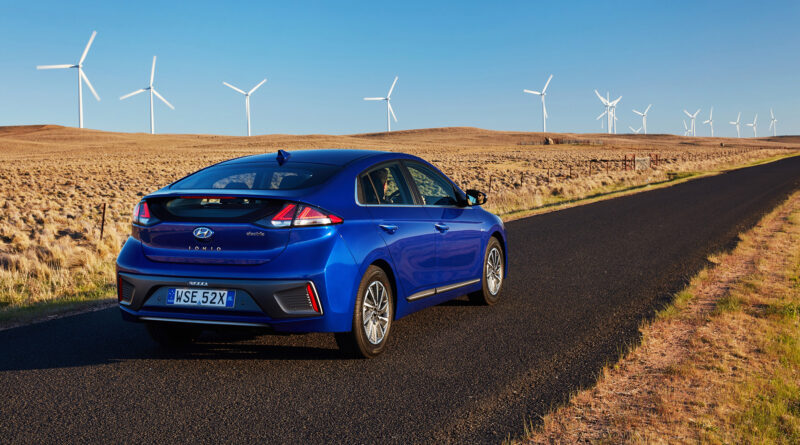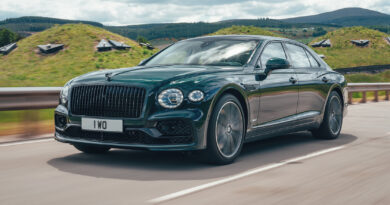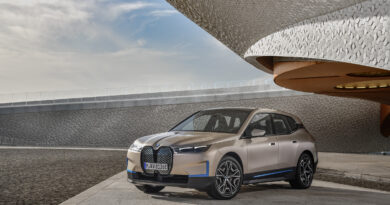EV and PHEV sales across Australian states and territories
People from the Australian Capital Territory are the unofficial kings of new electric car purchases, according to sales data supplied by the Federal Chamber of Automotive Industries.
Those in the ACT were at least three times more likely to buy an electric car or plug-in hybrid electric vehicle (PHEV) – at least those excluding Teslas – than new car buyers in Australia’s most populated states, including NSW, Victoria and Queensland.
The VFACTS sales figures supplied included all non-Tesla PHEV and EV sales for all of 2019 and the first 11 months of 2020, the latter a year that saw unprecedented turmoil in the vehicle industry due to the COVID-19 pandemic.
Why no Tesla? Because Tesla doesn’t release sales figures for individual countries, although we have previously used registration data supplied by the Australian Bureau of Statistics to report on the popularity of Teslas across different parts of Australia.
While non-Tesla EV/PHEV sales still make up a tiny fraction of the overall vehicle sales for the ACT – just 1.03 percent – the higher proportion at least adds weight to the argument that government incentives can translate to higher EV ownership.
While still small – and well below the boom in regular hybrid sales throughout 2020 – the ACT has the most generous incentives for EV owners and buyers. A 20 percent annual discount on registration fees is applied to all pure electric vehicles and EV purchases are also stamp duty exempt. EV drivers in the ACT can also use transit lanes until 2023.
Granted, some of those EV and PHEV sales in the ACT would be to government departments splashing out with taxpayer dollars to show they’re being green.
Want the latest EV news and reviews delivered to your inbox? Subscribe to our weekly newsletter!
But there’s also a healthy proportion of private buyers deciding the EV proposition stacks up.
According to the Federal Chamber of Automotive Industries, incentives are playing their part.
“It is well known that government incentives are a strong stimulant for the uptake of zero and low emission vehicles, and this has been proven repeatedly in international markets,” said FCAI chief Tony Weber.
“It should be noted that the incentivisation does not necessarily need to be of a fiscal nature – incentives can include free parking and toll-free lanes on freeways. Consumer confidence can also be built through the uptake of the technology in government fleets and through setting state and national targets.”
Encouragingly, despite a 2020 market that had dropped 16 percent from January to November compared with the same period in 2019, sales of electric vehicles were still well ahead.
See the table at the bottom of this page to see all the numbers for EV and PHEV sales across Australia.
While we broke the figures down to EV/PHEV sales per 100,000 people, the more meaningful figure related those electrified sales to overall vehicle sales.
EV/PHEV sales in NSW
People from New South Wales buy more electric vehicles than any other Australian state or territory – just.
In the 23 months of supplied figures there were 1804 non-Tesla PHEVs and EVs, representing about one-third of the national tally of 5987 vehicles (2949 in 2019 and 3038 in the first 11 months of 2020).
One slight concern: while PHEV sales comfortably increased in 2020, for EVs they’re still slightly behind (456 versus 497). It’s the biggest EV decline across the country.
EV/PHEV sales in Victoria
For the first five or so years of Tesla sales Victorians have been slow on the uptake.
But they’ve warmed more to other EVs, according to the FCAI figures.
In the most recent 23 months of 2019 and 2020 Victorians bought 1624 EVs and PHEVs.
Perhaps unsurprisingly given the strict Melbourne lockdowns, in the first 11 months of 2020 electrified sales were down slightly compared with all of 2019.
However, whereas the Victorian lockdown saw the state’s overall vehicle sales plunge 29 percent, EVs and PHEVs were almost lineball.
Now all that remains is for the Victorian government to green up what is Australia’s dirtiest electricity supply.
EV/PHEV sales in Queensland
The sunshine state may love its sunshine and all the solar power it can provide, but they’re flailing somewhat with EV sales.
That’s a shame considering the “Electric Super Highway” that is claimed to be the world’s longest, constructed from millions in government investments.
Just 0.25 percent of the vehicles sold in Queensland in the 23 months covering 2019 and part of 2020 were EVs or PHEVs.
That’s lower than every state and territory except the Northern Territory.
EV/PHEV sales in Western Australia
It’s Australia’s biggest state with vast distances to cover – many of the coastal areas covered by the RAC’s Electric Highway – but that hasn’t stopped West Australians warming to EVs.
While just 0.28 percent of its overall vehicle sales went to non-Tesla EVs and PHEVs, it’s steadily increasing.
And while the sheer size of the state might suggest plug-in hybrids would tempt more buyers, it’s pure EVs proving popular.
Perhaps many in WA catch planes when they want to cover big distances.
EV/PHEV sales in South Australia
Dissecting the SA figures is a tad trickier because of a large one-off delivery of PHEVs in 2019.
That skewed the figures significantly, to the point where that one month of PHEV sales saw South Australia as the epicentre of plug-in hybrid action.
Looking at all other months suggests South Australians are more in tune with the likes of WA and Queensland with EV uptake.
EV/PHEV sales in Tasmania
Weeks ago Tasmania said 100 percent of its electricity was now being generated by renewables, much of it hydro.
It makes recharging an electric car that little bit greener.
And it’s the pure EVs proving popular in Tassie, with the state well ahead of others in the EV-versus-PHEV race.
Tasmanians have been buying more than twice as many EVs as PHEVs (103 EVs over the most recent 23 months versus 40 PHEVs).
EV/PHEV sales in the Northern Territory
The Territory is the home of LandCruisers and anything else that will happily soak up red dust and big distances.
So little wonder that EVs and PHEVs are a rare breed.
Over the past 23 months just 3 new PHEVs and 8 new EVs have been registered in the Territory, for a grand total of 11 – or about one every two months.
That gives the Northern Territory the lowest percentage of EV and PHEV sales compared with sales of petrol and diesel machines.
However, Territorians appear to be shunning PHEVs; of that tiny fraction of sales, it’s the EVs proving almost three times as popular as PHEVs.
The future: EV and PHEV sales
We’ll bring you a breakdown of EV and PHEV sales figures for 2020 when they’re released in 2020.
However, FCAI chief Tony Weber cautions that the lack of incentives for electric vehicles and talk of recent taxes being applied to EVs could slow progress.
“Without some type of incentivisation or stimulus, global data shows that the uptake of these vehicles is unlikely to exceed 4 per cent of sales until the late 2020s or even 2030,” said Weber.
“And here in Australia, we have been appalled to see some states actually imposing extra taxes on zero and low emission vehicles – a sure fire way of killing the technology in its infancy.”
As reported by EVcentral.com.au, a fightback has begun against those proposed EV taxes.
EV/PHEV sales in detail
| Sales | ACT | NSW | NT | Qld | SA | Tas | Vic | WA |
|---|---|---|---|---|---|---|---|---|
| 2019 PHEV sales | 48 | 346 | 2 | 186 | 336 | 12 | 425 | 71 |
| 2020 (Jan-Nov) PHEV sales | 109 | 505 | 1 | 243 | 91 | 28 | 362 | 110 |
| Total PHEV sales (23 months) | 157 | 851 | 3 | 429 | 427 | 40 | 787 | 181 |
| 2019 EV sales | 90 | 497 | 3 | 266 | 77 | 53 | 393 | 144 |
| 2020 (Jan-Nov) EV sales | 105 | 456 | 5 | 279 | 94 | 50 | 444 | 156 |
| Total EV sales (23 months) | 195 | 953 | 8 | 545 | 171 | 103 | 837 | 300 |
| EV/PHEV (23 months) | 352 | 1804 | 11 | 974 | 598 | 143 | 1624 | 481 |
| Total vehicle sales (23 months) | 34,226 | 612,600 | 15,544 | 390,215 | 121,092 | 33,790 | 504,479 | 172,237 |
| PHEVs/EVs as % of overall sales | 1.03% | 0.29% | 0.07% | 0.25% | 0.49% | 0.42% | 0.32% | 0.28% |




